Table of Contents
ToggleIntroduction:
“Do shoulder presses work side delts?”While shoulder exercises should be practiced regularly to increase the strength of the shoulder presses, there is no substitute for exercise to build strong and consistent shoulder muscles. While shoulder presses principally focus on the front deltoids or the front of the shoulder, there’s a typical inquiry that emerges among wellness fans: do bear squeezes work the side deltoids or the horizontal piece of the shoulder? In this conversation, we’ll investigate how shoulder presses draw in the side delts and examine procedures to guarantee complete shoulder advancement.
How do shoulder presses work side delts?
Essential Objective: Front Deltoids (Foremost Deltoids):
During a standard shoulder press, whether with a hand weight or dumbbell, the essential accentuation is on the front deltoids.
At the point when you push the weight above, the front deltoids are answerable for the underlying piece of the development, lifting the load from shoulder level to the midpoint.
Auxiliary Commitment: Side Deltoids (Parallel Deltoids):
While the front deltoids are essentially answerable for lifting the weight, the side deltoids become an integral factor as you keep on pushing the weight above.
The sidelong deltoids help settle and control the development, particularly when you expand your arms completely and lock out at the highest point of the lift.
They likewise assume a part in keeping up with shoulder solidness as you lower the load.
Varieties to Focus on the Side Delts More:
To explicitly focus on the side delts (horizontal deltoids) during shoulder workouts, you can integrate parallel raises into your daily schedule. This exercise includes lifting hand weights or different loads out to the sides, straightforwardly focusing on the side deltoids.
Horizontal raises seclude the side deltoids all the more and permit you to involve lighter loads for better control.
Integrating Varieties:
To stress the side deltoids, you can remember parallel raises for your shoulder exercise routine daily schedule.
Furthermore, you can change your shoulder press strategy somewhat by utilizing a more extensive hold, which can connect with the side deltoids positively.
Six best shoulder presses Exercises.
- Dumbbell Shoulder Press
- Lateral Raises
- Front Raises
- Rear Deltoid Raises
- Upright Rows
- Arnold Press
Dumbbell Shoulder Press
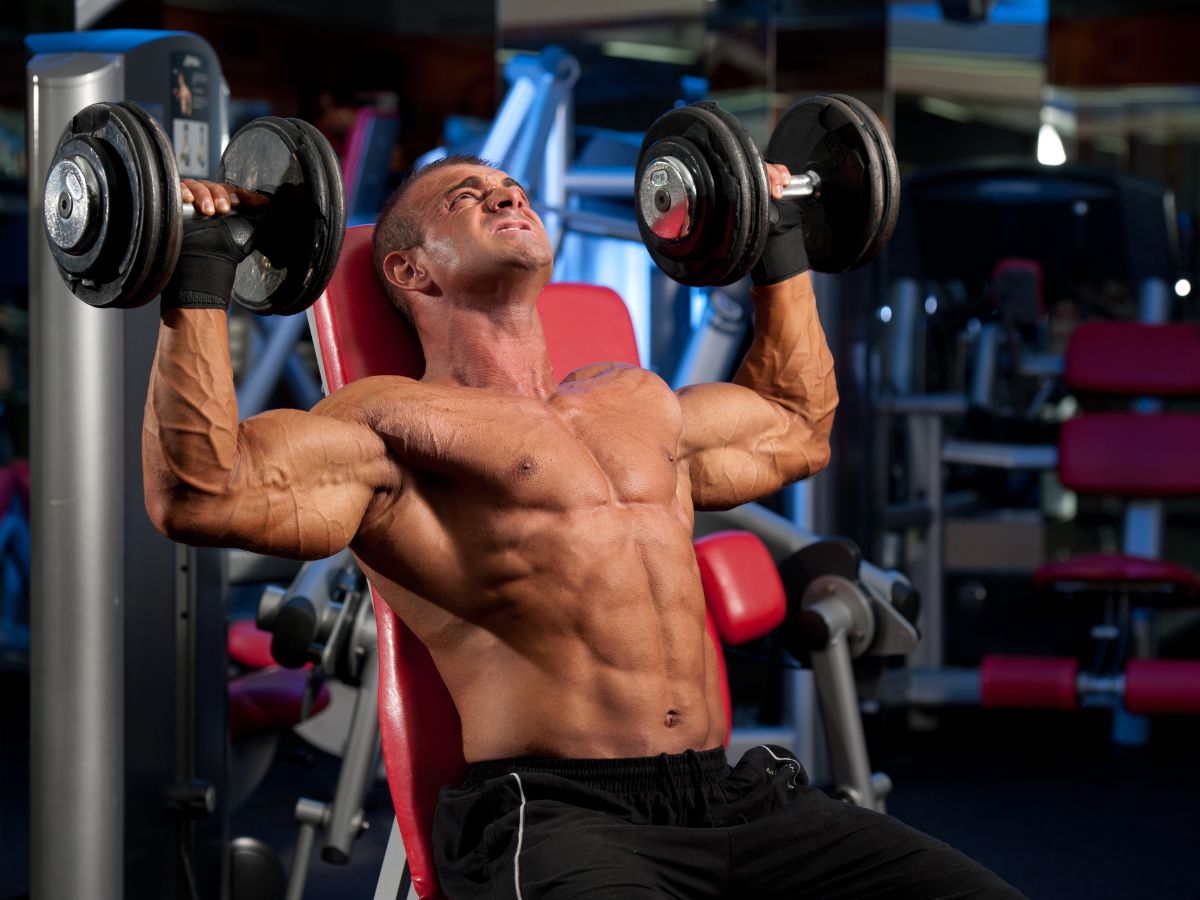
The dumbbell shoulder press is one of the most amazing activities for reinforcing your shoulders and upper back. The greatest advocate of the shoulder press is the front part of your shoulder muscle (foremost deltoid); however, you’ll likewise be sorting out your deltoids, rear arm muscles, trapezius, and pecs.
In addition, your muscles will receive the rewards of the shoulder press. The pressure put on your bones during the activity makes them increment their thickness and get more grounded, diminishing the probability of osteoporosis.
The shoulder press likewise brings right into it the stabilizer muscles in your shoulders, elbows, and wrists, and the movement, by implication, focuses on your abs as you keep a straight center all through. Together, this works on your steadiness and equilibrium.
How to do Dumbbell Shoulder Press?
Beginning Position:
- Hold a dumbbell in each hand at shoulder level, with palms looking ahead and elbows out to the sides.
Executing the Lift:
- Breathe out and push the dumbbells up until your arms are completely stretched out over your head.
- Keep your back straight, and try not to curve your spine unreasonably.
Completing the Development:
- Breathe in as you gradually bring down the dumbbells back to the beginning situation at shoulder level.
- Control the development all through, particularly while bringing down the loads.
Wellbeing and Tips:
- Begin with a weight that permits you to keep up with great structure.
- Try not to lock your elbows at the highest point of the development.
- Keep your center connected to help your back.
- Ensure your developments are smooth and controlled.
Lateral Raises
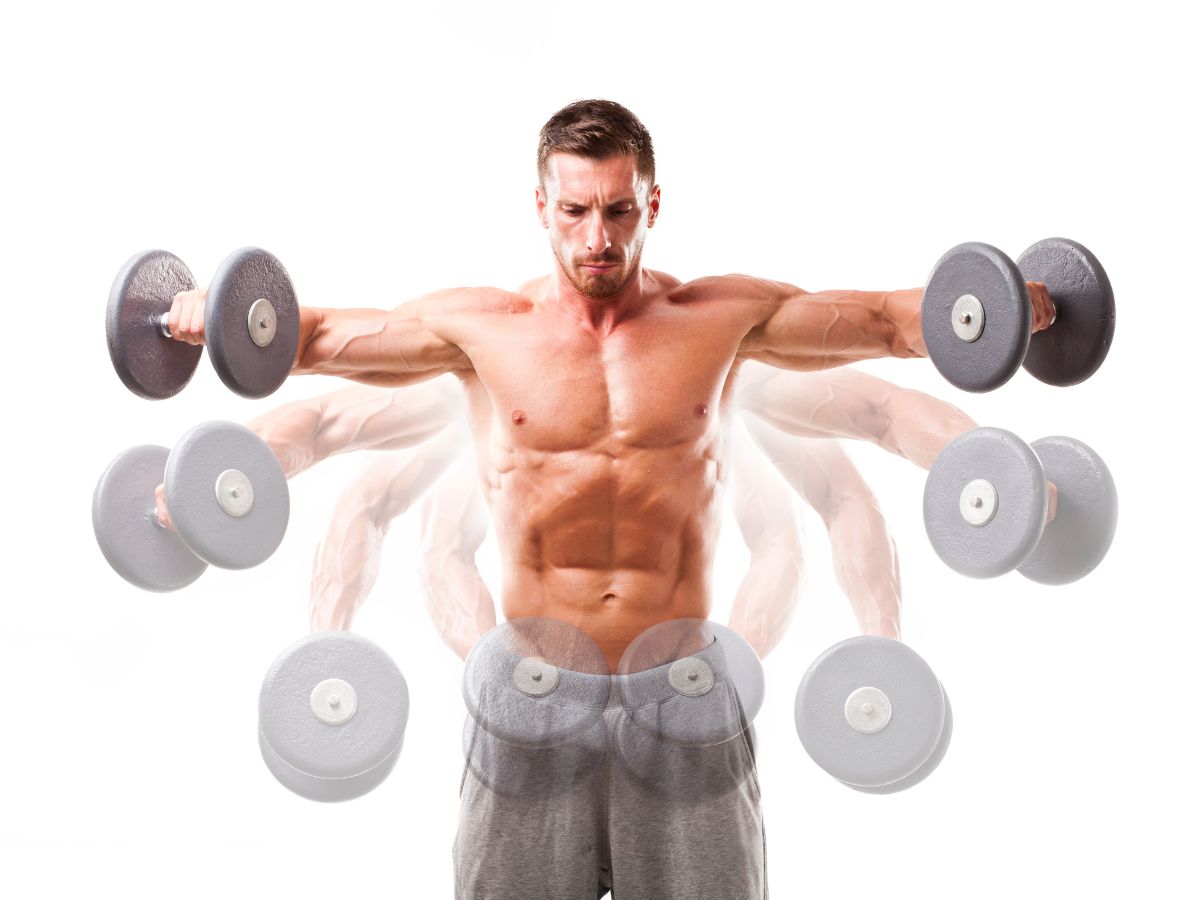
The side lateral raise is a successful shoulder-fortifying development intended to segregate the parallel top of the deltoid muscle. Performed routinely, this can assist you with creating more grounded, more extensive shoulders. All you really want is a couple of light dumbbells and enough shoulder adaptability to snatch your arms (lifting the loads out and away from your body) until they structure a “T” shape at your shoulders.
By and large, raises ought to be integrated into chest area strength preparation schedules, and they ought to be performed after compound activities that consolidate the shoulder, for example, slant free weight press, shoulder press, push-ups, or pull-ups. This is like the dumbbell front raise.
How to do Lateral Raises?
- Stand tall, a dumbbell in each hand. Arms are at your sides, palms looking in. Position your feet generally hip-distance separated. Really look at your stance — roll your shoulders back, draw in your center, and gaze directly ahead.
- Raise your arms all the while only a couple creep out to each side and interrupt. This flashing interruption ought to assist with guaranteeing you separate your trapezius muscle from the development, focusing on the deltoids as expected.
- Lift the hand weights up and out to each side, keeping your arms totally straight, halting when your elbows arrive at shoulder level, and your body is framing a “T” shape. Take in as you lift.
- Delay and hold briefly at the highest point of the development.
- Bring down the loads gradually (accept about two times as long to bring down the loads as you took to lift them), taking your arms back to your sides. Inhale out as you bring down the hand weights.
Front Raises

The front raise is a disconnection practice that works the foremost deltoids (front of your shoulders), albeit different muscles like the horizontal deltoids (side of shoulders), pectorals (chest), and trapezium (upper back) are worked less significantly as they help to settle the development.
This shoulder exercise can assist with developing both the size and grit of the shoulders and can be a serious area of strength for prompt activities like the chest press. By working the settling muscles, front raises help to develop shoulder security and versatility further.
It is smarter to utilize a lighter weight and spotlight on conveying wonderful structure, as utilizing loads that are too weighty builds the gamble of injury, and regularly utilizes the center more to create energy as opposed to working the shoulders.
How to do Front Raises?
Beginning Position:
Hold a free weight in each hand, palms dealing with it, and let your arms hang by your sides. This is your beginning position.
Lifting the Loads:
Keeping your arms straight (yet not locked), breathe out and lift the hand weights before you.
Keep your palms overcoming all through the development.
Lift the loads until your arms are lined up with the ground or somewhat underneath shoulder level.
Pause and Squeeze:
At the highest point of the development, stop briefly and crush your front deltoids.
Lowering the Weights:
Breathe in and gradually bring down the free weights back to the beginning position, permitting your arms to hang by your sides.
Repetition:
Rehash the development for the ideal number of redundancies.
Rear Deltoid Raises
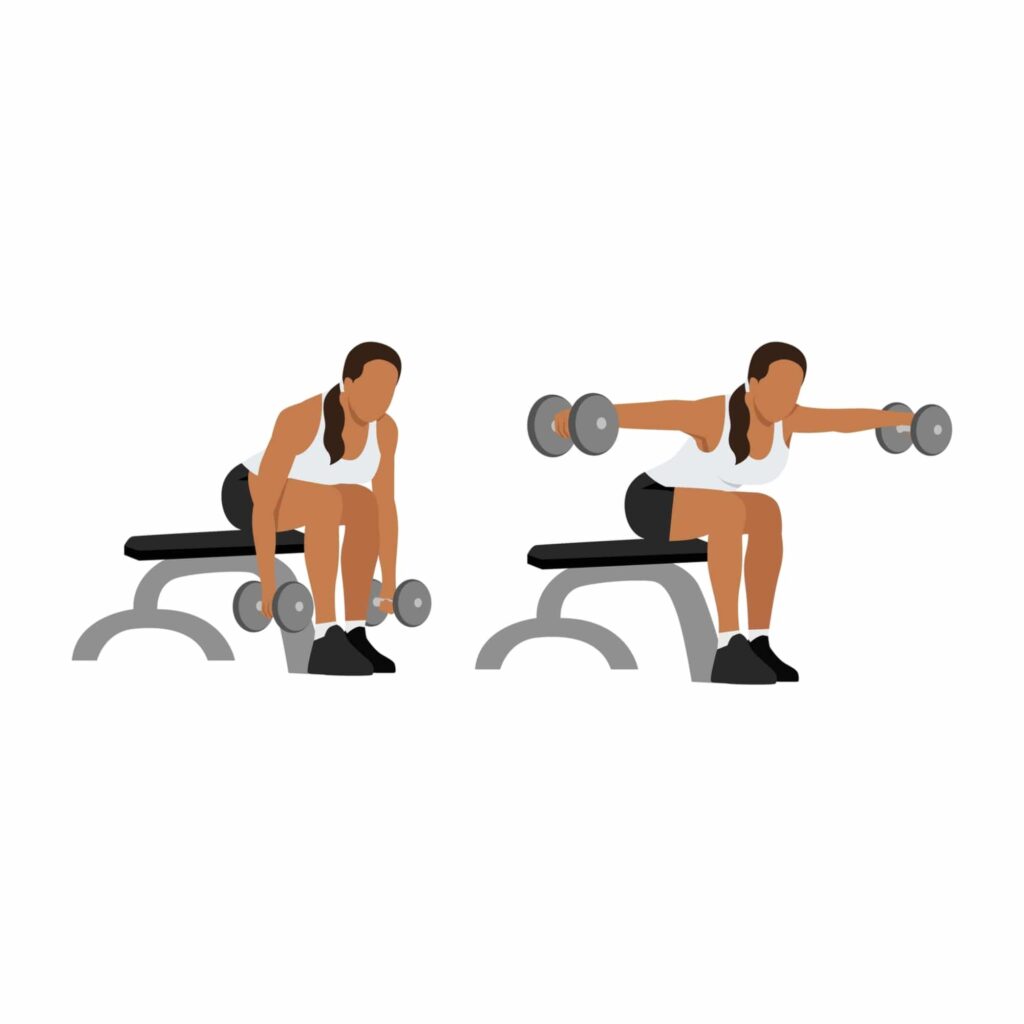
The dumbbell back parallel raise is a detached development that numerous lifters use to assist with building themselves “rock shoulders.” It increments shoulder hypertrophy by drawing in one of the littlest — and frequently ignored — muscles in the shoulder, the back deltoid. In any case, ensuring your back (back) shoulders are solid and solid doesn’t just assist your shoulders with popping through your shirt. You’ll likewise work on squeezing and pulling exhibitions in powerlifting, weightlifting, and practical wellness moves.
All you’ll require is a couple of dumbbells to add this little activity and have a major effect on your program. Furthermore, in case it appears to be an exercise in futility to disengage such a little muscle, it’s critical to take note that this is a key workout in any event when, generally, strength is your essential objective. Building solid back delts can assist with forestalling imbalances that might prompt wounds. It does so by giving your chest area the equilibrium it requires to remain solid during lifts as large and wide as the seat press, grab, and deadlift. This article will show you how to receive this large number of rewards — and that’s just the beginning — from the dumbbell back sidelong raise.
How to do Rear Deltoid Raises?
- Please set up an incline bench on its last setting. Lie face down on the seat, with your upper chest and shoulders past the brink of the seat.
- Arrive at your arms on the floor. Turn your thumbs towards one another with your hands pronated. Lift your arms outwards and somewhat forward, connecting with your back delts. Keep a delicate to liberal twist in your elbows.
- Gradually lower your hands. Try not to permit gravity to pull them down rapidly. Assuming that you are utilizing a lot of weight, the loads will rush down rapidly. Change the heap likewise.
Upright Rows
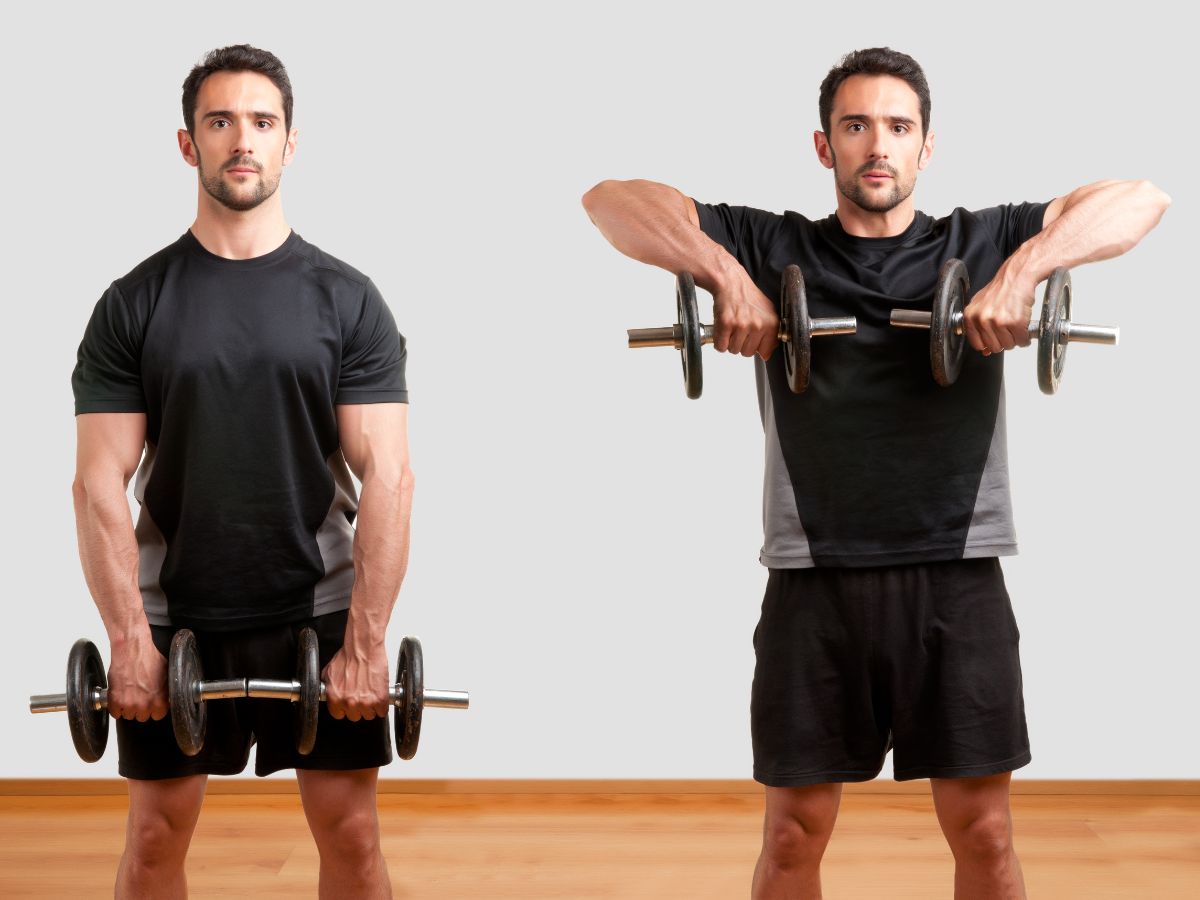
The upright row works the front and center tops of the deltoids (shoulder muscles). This exercise likewise helps construct the trapezius and rhomboids (muscles in the center and upper back) and, surprisingly, the biceps muscles (front of the upper arm).
These muscles help make lifting and pulling exercises simpler. This incorporates lifting basic food item sacks off the floor to put them on the counter, pulling your jeans on while getting dressed, and other comparable developments.
How to do Upright Rows?
Beginning Position:
- Stand up straight with your feet about hip-width separated.
- Hold a dumbbell with an overhand grasp (palms confronting your body) and hands situated somewhat nearer than shoulder-width separated. Then again, you can involve dumbbells in each hand, palms confronting your thighs.
- Let the dumbbell or barbells balance before your thighs at a careful distance. This is your beginning position.
Lifting the Weight:
- Breathe out and lift the dumbbell or barbells, keeping them near your body.
- Lead with your elbows, pulling the load up toward your jaw. Your elbows ought to point outward and up during the lift.
- Lift the load until it arrives at chest or jaw level, with your elbows over your hands.
Delay and Crush:
- At the highest point of the development, stop briefly and press your shoulder and upper back muscles.
Bringing down the Weight:
- Breathe in and gradually bring down the dumbbell back to the beginning position, expanding your arms completely.
Redundancy:
- Rehash the development for the ideal number of redundancies.
Arnold Press
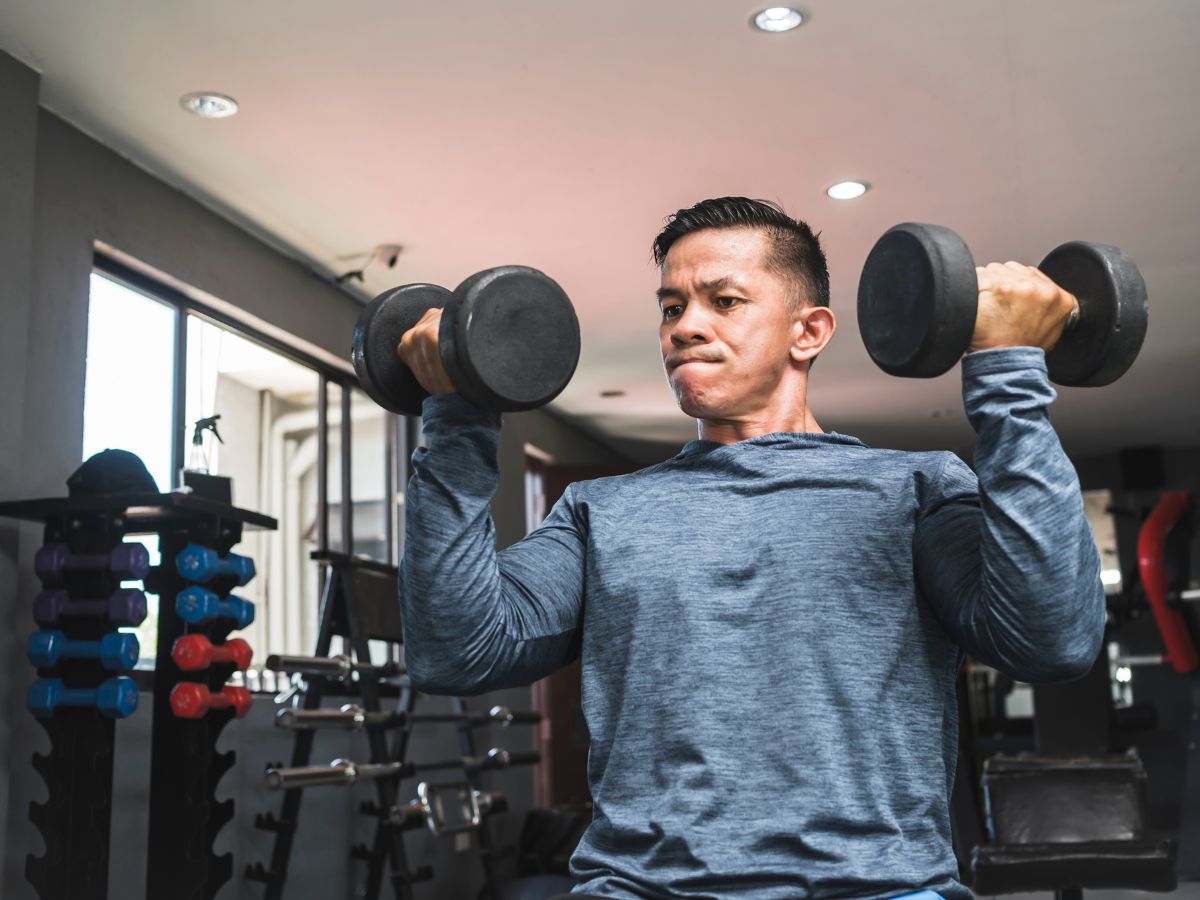
In the event that you’re actually asking yourself, “What is an Arnold Press? In any case, rather than straightly lifting the free weight all over, you’re consolidating a curve and adding profundity to your scope of movement.
This regular wrist turn begins with your clenched hands confronting inwards and closes with your palms looking out at the highest point of the press that initiates the designated muscles as a whole and works on your scope of movement.
How to do Arnold Press?
Beginning Position:
- Sit on an exercise seat with back help, or you can play out this activity while standing.
- Hold a dumbbell in each hand at shoulder level with your palms confronting your body. Your elbows ought to be bowed, and your upper arms ought to be lined up with the ground.
- This is your beginning position.
Pivoting and Lifting:
- Breathe out and, at the same time, pivot your wrists outward and lift the hand weights over your head.
- As you lift, your palms ought to look ahead at the highest point of the development.
Top of the Development:
- At the highest point of development, your arms ought to be completely expanded, and the free weights ought to be over your head.
Bringing down the Loads:
- Breathe in and turn around the movement by pivoting your wrists back to the beginning position and bringing the free weights down to bear level.
FAQ:
Is shoulder press enough for front delts?
You cover a lot of the front delts doing any squeezing development (like a seat press, slant press or shoulders, and so forth). So doing a front raise is an excess except if it’s slacking; a shoulder/any above press is a better decision as you can deal with more burden, and it will likewise hit to some degree draw in the mid-delts.
What part of the delt does shoulder press work?
The shoulder press is one of the most outstanding activities for reinforcing your shoulders and upper back. The greatest advocate of the shoulder press is the front piece of your shoulder muscle (foremost deltoid), yet you’ll likewise be figuring out your deltoids, rear arm muscles, trapezius, and pecs.
Read More :